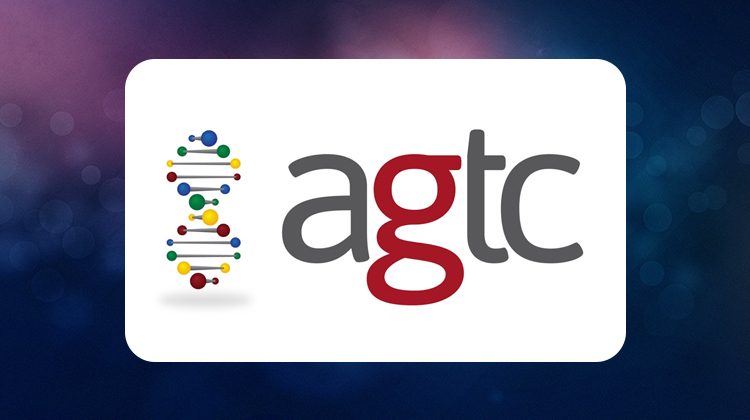AGTC Makes Moves with Cash in Hand

As Applied Genetic Technologies Corporation (AGTC) heads into the summer with encouraging results for two of its lead candidates using the adeno-associated virus-based gene technology for treatment of X-linked retinoschisis (XLRS) and achromatopsia, the company finds itself well positioned to fund the programs along with five others it has in the works as its cash position is about 50% ahead of where the firm expected to be at mid-year.
At the Macula Society annual meeting in Singapore last month, Mark Pennesi, MD, PhD, of Oregon Health and Science University Casey Eye Institute, reported that the first 12 subjects enrolled in the low-, middle-, and high-dose groups of the Phase I/II XLRS dose-escalation study witnessed no treatment-related serious adverse events and tolerated the treatment well, with several subjects having been followed for more than one year. AGTC is partnering with Biogen in the XLRS program.1
XLRS is an inherited retinal disease caused by mutations in the RS1 gene, which encodes the retinoschisin protein. It is characterized by abnormal splitting of the layers of the retina, resulting in poor visual acuity in young boys, which can progress to legal blindness in adult men. It affects about 35,000 patients in the US and European Union.
“Mild to moderate ocular inflammation was observed in the treated eye for the majority of patients and resolved or was controlled either without further intervention or after treatment with topical or oral corticosteroids,” Dr. Pennesi tells OIS Weekly.
Says AGTC CMO Michael Goldstein, MD, “These findings are consistent with previous results demonstrating that our investigational gene therapy for XLRS was generally well tolerated and demonstrated a good safety profile across treatment groups.” With these results in hand, AGTC is continuing enrollment in the trial at the highest dose in the expansion group.
Dr. Pennesi notes that the severity of intraocular inflammation of medications administered via a single intravitreal injection, such as the gene therapy treatment involved in the XLRS trial, are mild or moderate and respond to treatment when needed.
“All subjects in the trial continue to be monitored for ocular inflammation and other safety events,” Dr. Pennesi says. “The mild-to-moderate ocular inflammation that was observed in the treated eye for the majority of patients was controlled either without further intervention or after treatment with topical or oral corticosteroids in all of the first 12 subjects.”
Because of the dose-escalation nature of the trial, researchers are using prophylactic and therapeutic steroids in the expansion group, which is receiving the highest dose, to control any inflammation. AGTC expects to provide additional data on the first 12 patients this summer.
Achromatopsia Findings Support IND
About a week after Dr. Pennesi reported the XLRS results at the Macula Society meeting, AGTC announced the publication of investigational new drug application (IND)-enabling preclinical data demonstrating the safety and efficacy of AGTC-402 in the treatment of achromatopsia due to mutations in the CNGA3 gene. The findings were reported in the June issue of Human Gene Therapy Clinical Development.2 AGTC-402 utilizes AGTC’s proprietary adeno-associated virus-based technology to deliver a functional copy of the human CNGA3 gene.
“These data, which were included in our Investigational New Drug application filed with the US Food and Drug Administration in October 2016, provide compelling evidence that AGTC-402 has potential as a treatment for achromatopsia due to CNGA3 mutations,” says AGTC president and CEO Sue Washer. “We are currently scheduling patients for enrollment in our Phase I/II trial in this patient population, and we continue enrollment in our clinical trial for patients with CNGB3 achromatopsia.”
Flush with Cash
At OIS@AAO 2016, Washer said the company expected to have at least $100 million in cash by June 2017. Actually, AGTC is ahead of its goal; as of March 31, its cash, cash equivalents, and investments amounted to $148.7 million. The company believes this will be enough to fund preclinical studies and clinical trials for its XLRS and achromatopsia programs, as well as other programs in ophthalmology using adeno-associated virus-based therapies for X-linked retinitis pigmentosa (XLRP) and wet age-related macular degeneration, along with the optogenetics program with Bionic Sight.
AGTC also has non-ophthalmology programs that include its adrenoleukodystrophy program and its otology program, which is in preclinical development. The company expects to advance several otology product candidates into clinical development in the next few years.
REFERENCES
1. Pennesi ME. AGTC RS1-001 Phase I/II intravitreal gene therapy interim safety results for X-linked retinoschisis. Paper presented at: 40th Annual Meeting of the Macula Society; June 10, 2017; Singapore.
2. Goodwine E, Ofri R, Banin E, et al. Safety and efficacy evaluation of rAAV2tYF-PR.1-hCNGA3 vector delivered by subretinal injection in CNGA3 mutant achromatopsia sheep. Hum Gene Ther Clin Dev. 2017;28:96-107.

